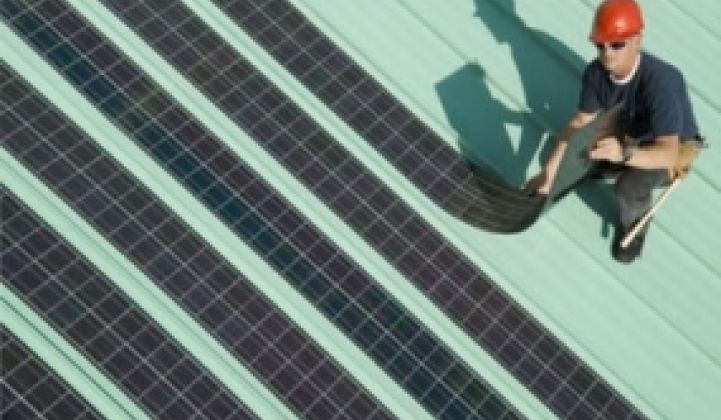SoloPower, a San Jose, California-based maker of CIGS-based flexible thin-film solar modules, just raised a small amount of venture funding, according to this SEC filing (and verified with one of the investors).
SoloPower raised $7.1 million from existing investors which include Hudson Clean Energy Partners, Crosslink Capital, Convexa, and Firsthand. The solar startup is also the recipient of a $197 million DOE loan guarantee issued in August of last year for its new Oregon factory. Corporate greentech recipients of DOE loans in the manufacturing sector such as Solyndra, Abound Solar, Fisker Automotive, and Beacon Power have met their share of challenges, though Tesla Motors, also a DOE loan recipient, might buck that trend.
Earlier this year, SoloPower raised the bar a little higher on the efficiency of its flexible solar panels, and is now boasting an NREL-measured aperture-area efficiency of 13.4 percent. Module efficiency for the firm's SF1 panel is 11.4 percent, according to Tim Harris, the CEO. The SF1 panel is optimized for metal roofs and has a junction box that is located on the front of the panel. The firm's panels are built with a roll-to-roll electrodeposition process.
SoloPower's 400-megawatt manufacturing facility in Portland, Oregon has commercial production slated for later this year.
SoloPower also recently announced that General Wesley K. Clark (U.S., retired), former NATO Supreme Allied Commander of Europe and former U.S. presidential candidate, joined SoloPower’s Board of Directors. Clark is co-chairman of Growth Energy, an ethanol lobbying organization and a board director of BNK Petroleum, a shale gas developer and producer.
SoloPower would appear to be going after the same rooftop market as Ascent Solar, Global Solar, and the now-bankrupt ECD, except it is doing it with a more efficient product. The value proposition for flexible modules from SoloPower is that there is less hardware required to install the modules and the installation is easier and less expensive. However, this thesis has yet to be proven in volume and scale.
The company claims that lighter weight makes installation easier and reduces the cost of balance-of-system components. Certainly, it can eliminate the cost of racking, which adds about $0.25 per watt.
But why bother messing with flexible CIGS designs when the price of conventional crystalline silicon continues to plummet along with the costs of balance-of-system components? And does lighter weight really provide any value?
One of the expensive parts of building a flexible CIGS module is the necessity and cost of an advanced encapsulant to protect the module and keep water out. That component remains a precipitously high-cost piece of the flexible CIGS puzzle.
I interviewed personnel at the firm last year; the CEO told me that capex is "way under a dollar [per watt]" and production cost is "competitive."
Here's the list of successful, profitable flexible rooftop solar companies:



